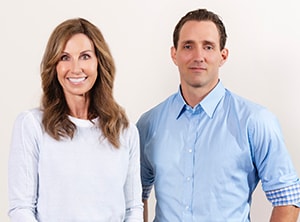By Janine Stichter, PhD (Behaviorist) and Scott Schutte (Coach/Gym Owner)
As a fitness professional, you understand the importance of helping your clients reach their health and fitness goals. However, you may have noticed that some clients struggle to comply with their programs despite your best efforts. This is where behavior science can help.
Recently, we taught a full day workshop on behavior science at Perform Better Headquarters. We covered a lot of content, and systems to help coaches implement behavior science in their practice to increase compliance. In polling our participants, they identified their top three biggest takeaways. We agree that these are key principles that can dramatically change not only how well clients respond to your coaching, but their results as well. We hope you find them as helpful as our group did.
As a fitness professional, you are in a unique position to help your clients change their behavior and adopt healthier habits. However, this can sometimes require difficult conversations about their goals, motivations, and challenges.
It's important to remember that these conversations should not be done on the gym floor or in the middle of a training session. Instead, find a time and place to have these conversations in private. This can be over the phone, zoom or in person in a room at your facility. This allows your clients to feel more comfortable opening up to you, creating better focus and learning to help them and you more accurately recall events and strategies which can all lead to more productive discussions about behavior change.
When it comes to behavior change, less is often more. This means that you should aim to use the minimum effective dose when designing your clients' programs.
We have a wealth of information to share, but when clients are learning new information or strategies to implement consistently, small incremental steps and small wins are essential to create and maintain momentum. Make sure to focus on one or two small changes that they can realistically make and stick to over time. This can lead to better long-term compliance and results.
In other words, there is a reason that the behavior, even the ones your clients have been trying to get rid of persist. It's essential that we figure out the why so we can help them find a more adaptive behavior that still meets that need.
In behavior science, there are four root causes of unhealthy behavior: escape, attention, tangible, and sensory.
Escape refers to behavior that helps someone avoid something unpleasant or uncomfortable. Attention-seeking behavior is done to get the attention of others or socially connect. Tangible behavior is driven by the desire for material things or rewards. Finally, sensory behavior is driven by a desire for pleasure or sensory stimulation.
To address unhealthy behavior, it's important to identify the root cause and find healthier alternatives that serve the same purpose. For example, if a client engages in emotional eating as a way to escape uncomfortable emotions, you can suggest alternative coping strategies like journaling, meditation, or just asking what else they do to escape.
In conclusion, behavior science can be a powerful tool for fitness professionals to improve compliance and help clients achieve their goals. Remember to have difficult conversations in a private setting, use the minimum effective dose when designing programs, and identify the root cause of unhealthy behavior to find healthier alternatives. By implementing these strategies, you can help your clients make lasting changes and lead healthier, happier lives.
Do you think if you have this knowledge and can execute it effectively you should get paid more than an average trainer? We agree, check back for part two on how you turn this type of coaching into a wellness program that can make you more money while making a greater impact.
You can learn more about behavior coaching and how this can improve your income and impact at www.healthybehaviorinstitute.com
Janine Stichter & Scott Schutte

Scott Schutte is a personal trainer, weight loss behavior coach, gym owner, and fitness educator. He has successfully guided thousands of people on their fitness journey. His education and experience have led him to work with many clients and educate other fitness professionals on how to be successful coaches with an emphasis on behavior change.
FB - scott.schutte.12
Insta - scott.schutte
Dr. Janine Stichter has been in the field of behavior change for over 20 years as a researcher, author, educator and practitioner. She understands the importance of behavior science for client success. Her career has focused on understanding the why behind behavior and identifying clear practices that are practical and result in sustained change.
FB - janine.stichter.1
Insta - drjaninestichter
Most recently they co-founded the Healthy Behavior Institute, an educational platform for fitness professionals and gym owners that specialize in behavior modification. Their educational materials provide professionals with a clear system to add an additional service for better client results and increased revenue.